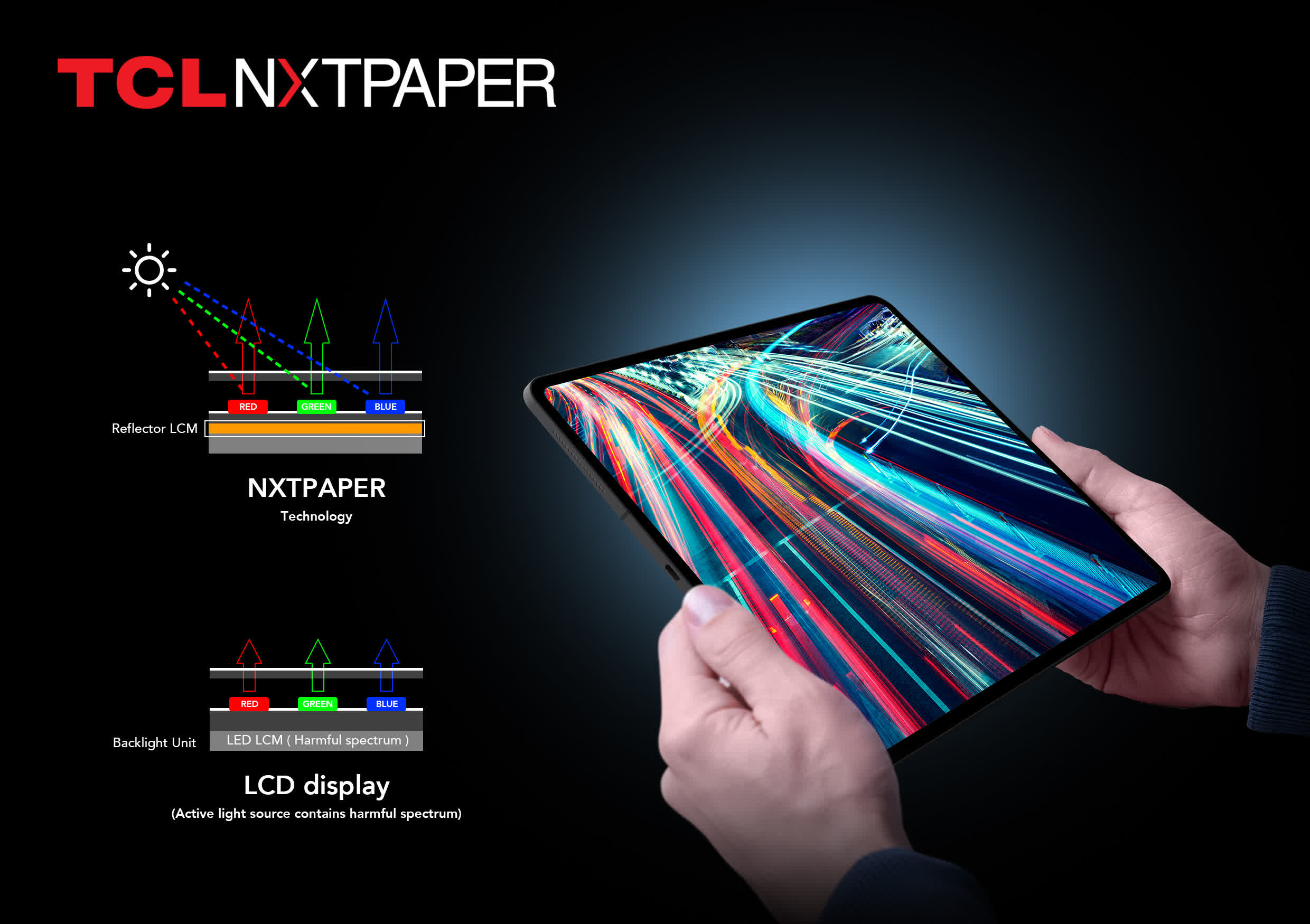Something to look forward to: It's been almost a decade since a technology like the electrowetting display showed any promise of offering the same power-saving capabilities of E-Ink displays without any of the drawbacks. Chinese manufacturer TCL has made a new variant of LCD technology that could turn that dream into a reality, without completely re-inventing the wheel.

TCL is mostly known for its relatively affordable TVs, soundbars, and smartphones, but for the past few years it's been busy cooking its own innovations. Last year, the Chinese company showed off its work on phones with foldable screens, including a dual-hinged phone that closely resembles a device from the fictional world of Westworld.
At IFA Berlin this week, TCL revealed it would expand its offerings with 4G tablets for education, true wireless earbuds that look a lot like those from OnePlus, and a smartwatch designed for older family members. However, the more interesting reveal was a new display technology that's supposed to have similar qualities to the E-Ink panels commonly found on e-Readers.
Despite being called "Next Paper," it's not an electrophoretic (or e-paper) display. Instead, it's a different spin on the traditional LCD technology that eliminates the need for a backlight in order to produce an image. It achieves this through a highly-reflective layer that allows it to use the natural light, and TCL says it owns 11 patents on the design -- despite this being a similar idea to the display technology used by the now defunct Pebble in its smartwatches.
The company says the first commercial Next Paper display is Full HD and offers 25 percent more contrast when compared to an E-Ink display. And while it isn't as thin as an E-Ink panel, it is 36 percent thinner than a typical LCD display. Power consumption is 65 percent lower and there's support for millions of colors (as opposed to a maximum of 4,096 on E-Ink), but you'll need ambient light to see anything on the screen.
Where it has potential to shine next to E-Ink displays is refresh rate. The latter technology isn't particularly good at displaying video content, which is why you'll only find it on e-Readers, price tags, and digital signage (likely manufactured by TCL). The Chinese company promises that Next Paper will be capable of smooth video playback for streaming or gaming.
This won't be coming to TVs or smartphones anytime soon, but TCL says it's working on a tablet with Next Paper which is planned for release early next year.
https://www.techspot.com/news/86639-tcl-made-paper-like-color-display-supposedly-higher.html
